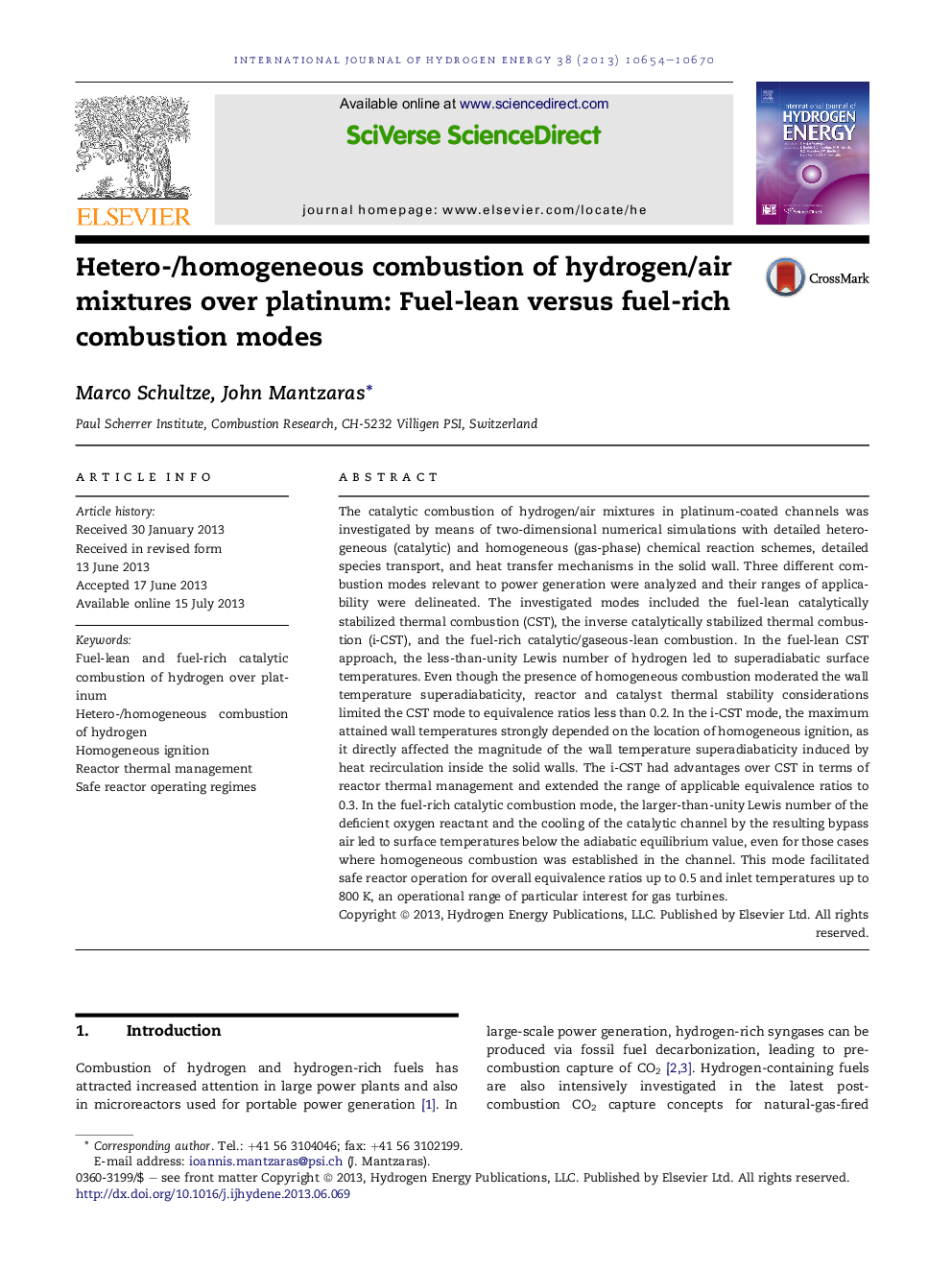| کد مقاله | کد نشریه | سال انتشار | مقاله انگلیسی | نسخه تمام متن |
|---|---|---|---|---|
| 7722510 | 1497520 | 2013 | 17 صفحه PDF | دانلود رایگان |
عنوان انگلیسی مقاله ISI
Hetero-/homogeneous combustion of hydrogen/air mixtures over platinum: Fuel-lean versus fuel-rich combustion modes
ترجمه فارسی عنوان
احتراق هتروژن / همگن مخلوط هیدروژن و هوا بیش از پلاتین: حالت های احتراق با سوخت سبک و سبک
دانلود مقاله + سفارش ترجمه
دانلود مقاله ISI انگلیسی
رایگان برای ایرانیان
کلمات کلیدی
احتراق کاتالیزوری سوخت هیدروژنی و سوخت غنی از هیدروژن بر روی پلاتین، هیدروژن / همگن احتراق هیدروژن، احتراق همگن، مدیریت حرارتی راکتور، رژیمهای عملیاتی رآکتور ایمن،
موضوعات مرتبط
مهندسی و علوم پایه
شیمی
الکتروشیمی
چکیده انگلیسی
The catalytic combustion of hydrogen/air mixtures in platinum-coated channels was investigated by means of two-dimensional numerical simulations with detailed heterogeneous (catalytic) and homogeneous (gas-phase) chemical reaction schemes, detailed species transport, and heat transfer mechanisms in the solid wall. Three different combustion modes relevant to power generation were analyzed and their ranges of applicability were delineated. The investigated modes included the fuel-lean catalytically stabilized thermal combustion (CST), the inverse catalytically stabilized thermal combustion (i-CST), and the fuel-rich catalytic/gaseous-lean combustion. In the fuel-lean CST approach, the less-than-unity Lewis number of hydrogen led to superadiabatic surface temperatures. Even though the presence of homogeneous combustion moderated the wall temperature superadiabaticity, reactor and catalyst thermal stability considerations limited the CST mode to equivalence ratios less than 0.2. In the i-CST mode, the maximum attained wall temperatures strongly depended on the location of homogeneous ignition, as it directly affected the magnitude of the wall temperature superadiabaticity induced by heat recirculation inside the solid walls. The i-CST had advantages over CST in terms of reactor thermal management and extended the range of applicable equivalence ratios to 0.3. In the fuel-rich catalytic combustion mode, the larger-than-unity Lewis number of the deficient oxygen reactant and the cooling of the catalytic channel by the resulting bypass air led to surface temperatures below the adiabatic equilibrium value, even for those cases where homogeneous combustion was established in the channel. This mode facilitated safe reactor operation for overall equivalence ratios up to 0.5 and inlet temperatures up to 800Â K, an operational range of particular interest for gas turbines.
ناشر
Database: Elsevier - ScienceDirect (ساینس دایرکت)
Journal: International Journal of Hydrogen Energy - Volume 38, Issue 25, 21 August 2013, Pages 10654-10670
Journal: International Journal of Hydrogen Energy - Volume 38, Issue 25, 21 August 2013, Pages 10654-10670
نویسندگان
Marco Schultze, John Mantzaras,
